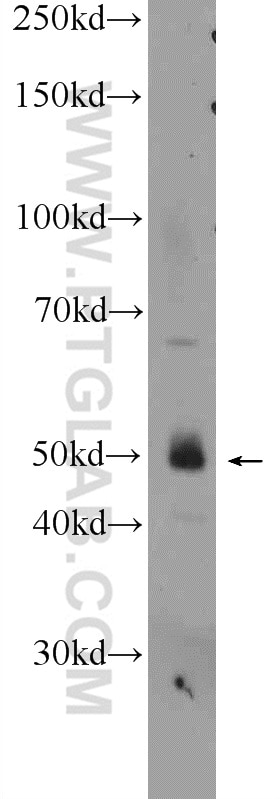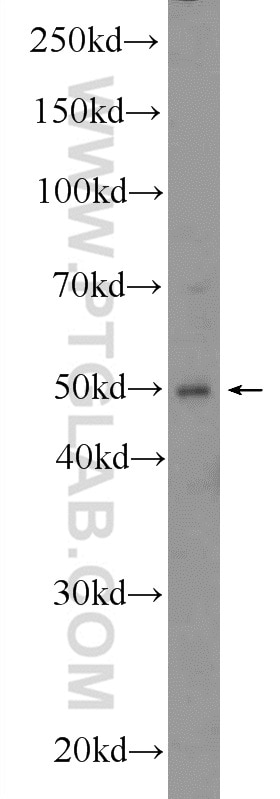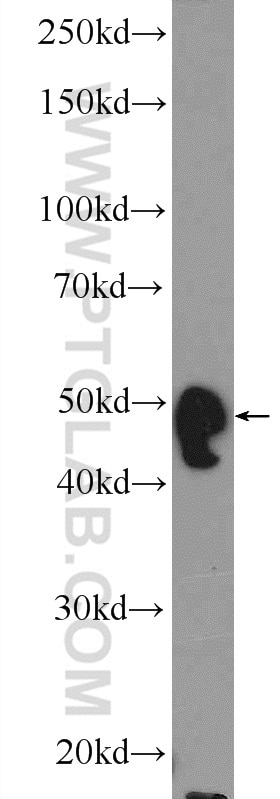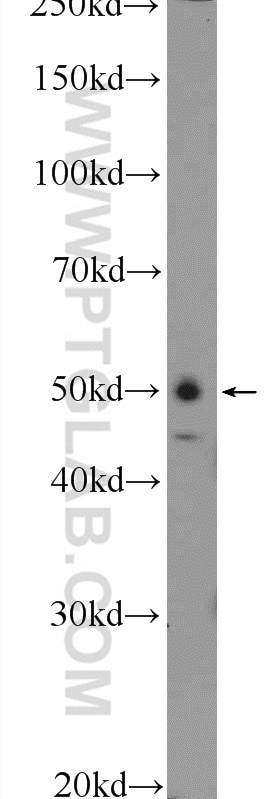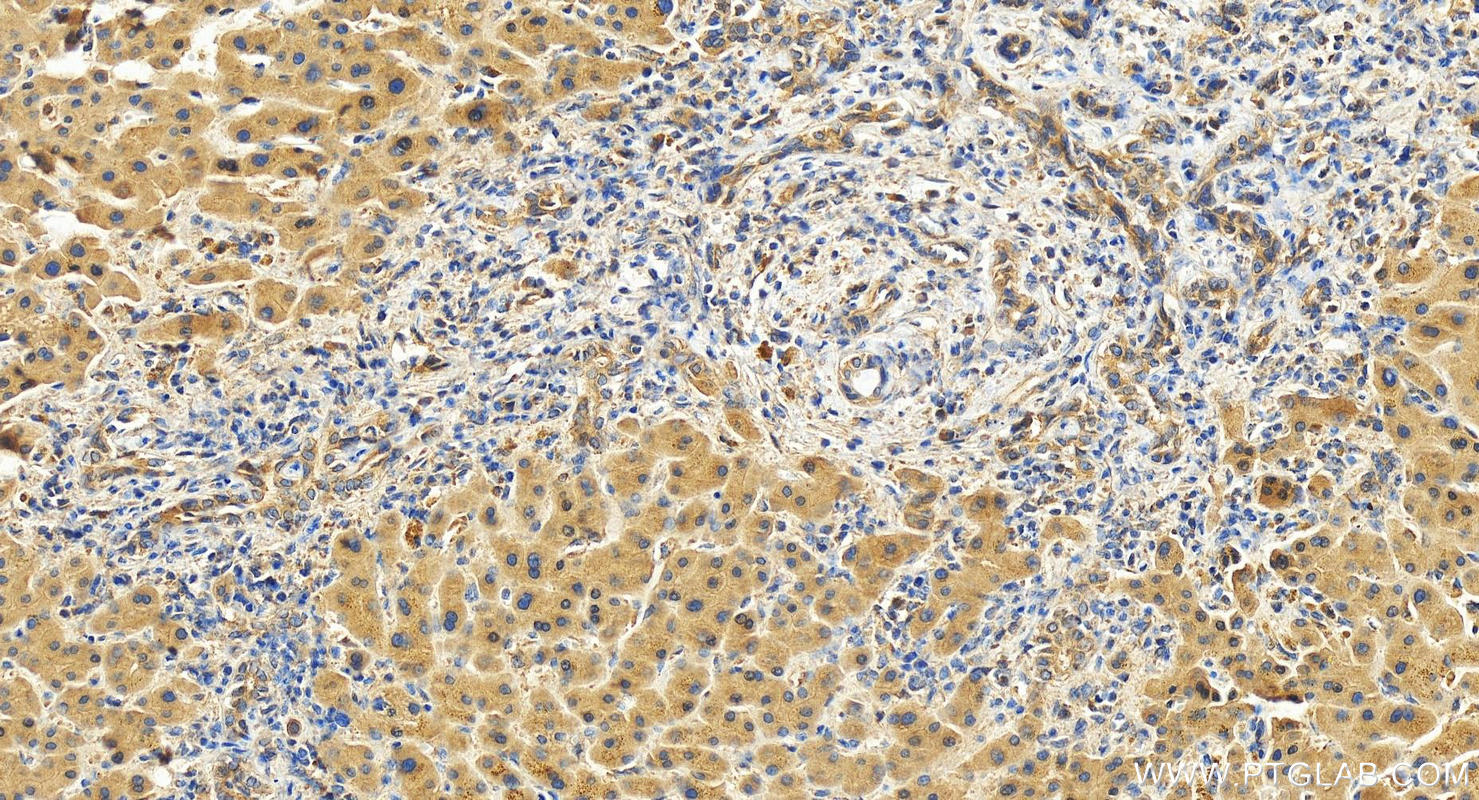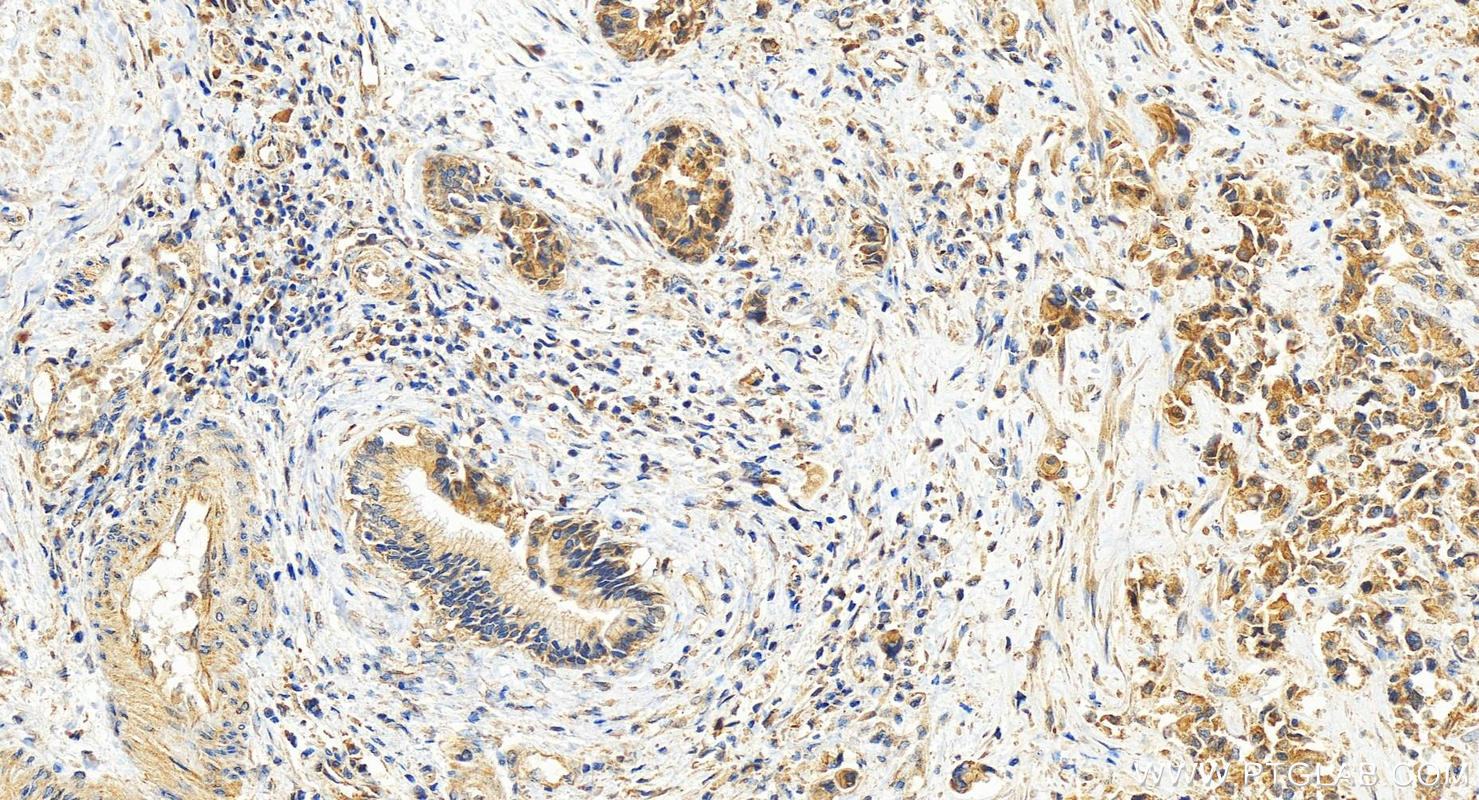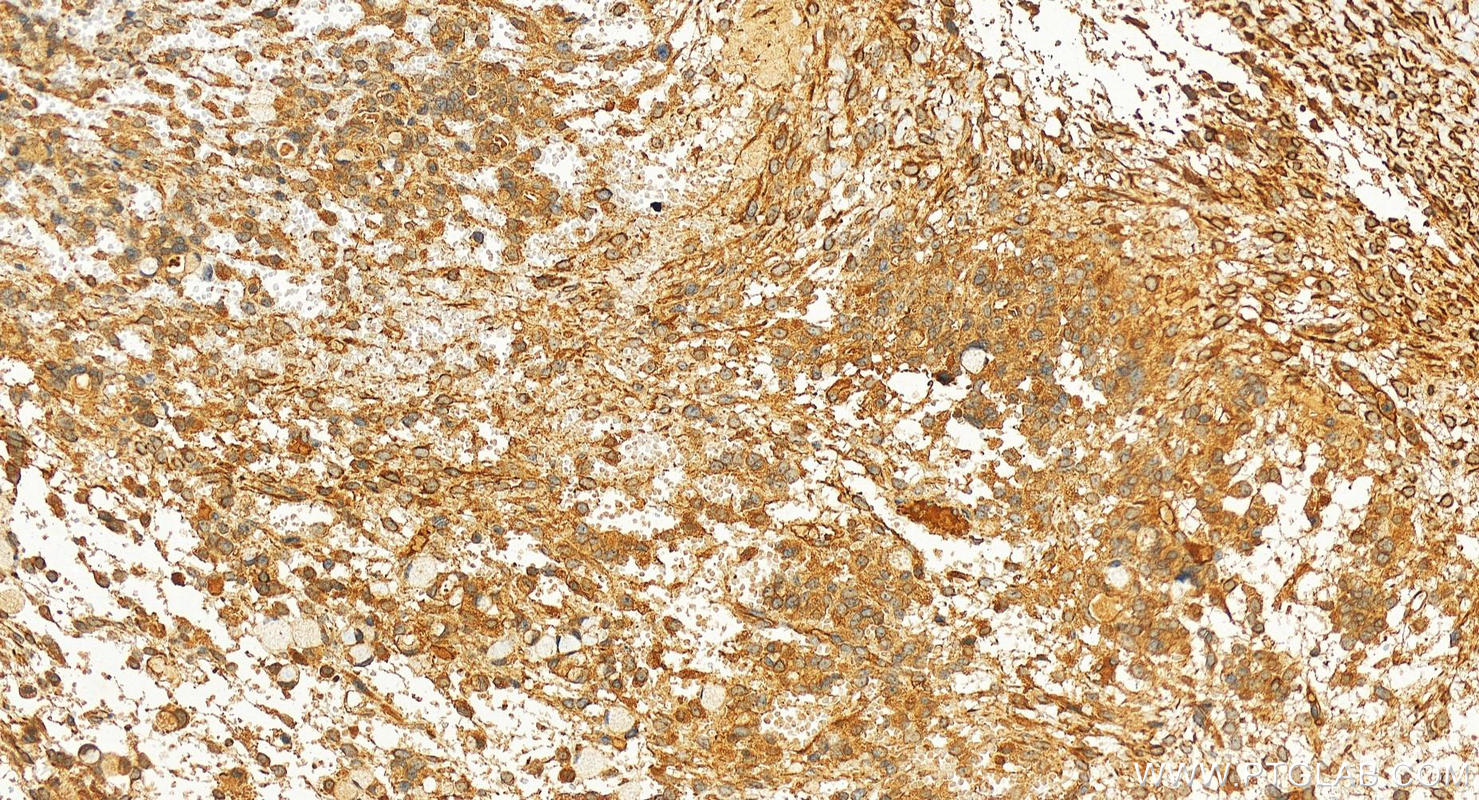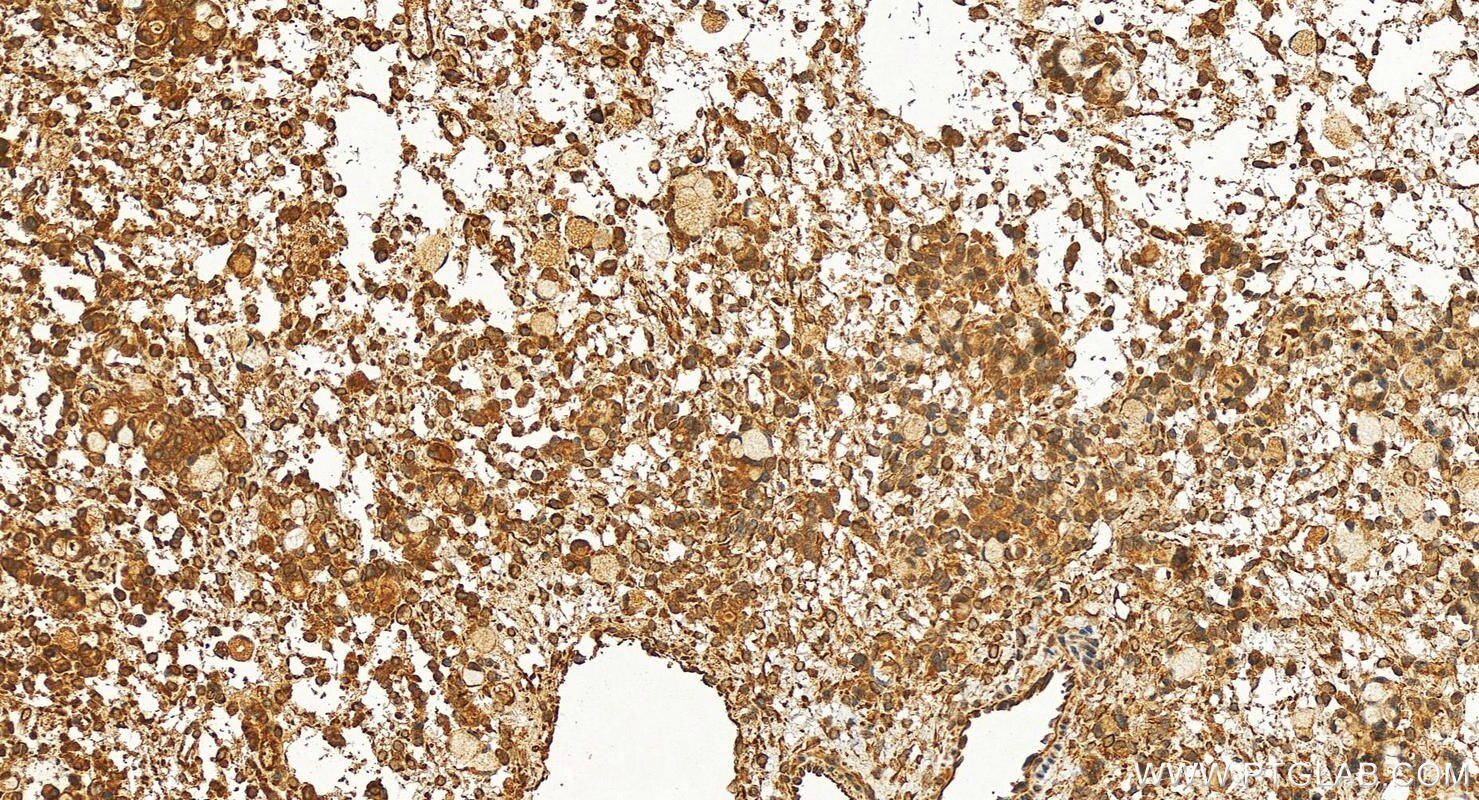- Featured Product
- KD/KO Validated
WIPI1 Polyklonaler Antikörper
WIPI1 Polyklonal Antikörper für WB, IHC, ELISA
Wirt / Isotyp
Kaninchen / IgG
Getestete Reaktivität
human, Maus
Anwendung
WB, IHC, IP, ELISA
Konjugation
Unkonjugiert
Kat-Nr. : 25204-1-AP
Synonyme
Geprüfte Anwendungen
| Erfolgreiche Detektion in WB | SW 1990-Zellen, HEK-293-Zellen, NIH/3T3-Zellen |
| Erfolgreiche Detektion in IHC | human intrahepatic cholangiocarcinoma tissue, human ovary cancer tissue Hinweis: Antigendemaskierung mit TE-Puffer pH 9,0 empfohlen. (*) Wahlweise kann die Antigendemaskierung auch mit Citratpuffer pH 6,0 erfolgen. |
Empfohlene Verdünnung
| Anwendung | Verdünnung |
|---|---|
| Western Blot (WB) | WB : 1:500-1:2000 |
| Immunhistochemie (IHC) | IHC : 1:50-1:500 |
| It is recommended that this reagent should be titrated in each testing system to obtain optimal results. | |
| Sample-dependent, check data in validation data gallery | |
Veröffentlichte Anwendungen
| KD/KO | See 1 publications below |
| WB | See 2 publications below |
| IP | See 1 publications below |
Produktinformation
25204-1-AP bindet in WB, IHC, IP, ELISA WIPI1 und zeigt Reaktivität mit human, Maus
| Getestete Reaktivität | human, Maus |
| In Publikationen genannte Reaktivität | human, Maus |
| Wirt / Isotyp | Kaninchen / IgG |
| Klonalität | Polyklonal |
| Typ | Antikörper |
| Immunogen | WIPI1 fusion protein Ag18461 |
| Vollständiger Name | WD repeat domain, phosphoinositide interacting 1 |
| Berechnetes Molekulargewicht | 446 aa, 49 kDa |
| Beobachtetes Molekulargewicht | 49 kDa |
| GenBank-Zugangsnummer | BC039867 |
| Gene symbol | WIPI1 |
| Gene ID (NCBI) | 55062 |
| Konjugation | Unkonjugiert |
| Form | Liquid |
| Reinigungsmethode | Antigen-Affinitätsreinigung |
| Lagerungspuffer | PBS with 0.02% sodium azide and 50% glycerol |
| Lagerungsbedingungen | Bei -20°C lagern. Nach dem Versand ein Jahr lang stabil Aliquotieren ist bei -20oC Lagerung nicht notwendig. 20ul Größen enthalten 0,1% BSA. |
Hintergrundinformationen
WIPI1, or WD repeat domain, phosphoinositide-interacting protein 1, is a member of the WD40 repeat family of proteins, which are key components of many essential biological functions. WIPI1 is involved in the regulation of autophagy, a cellular process critical for maintaining cellular integrity and recycling intracellular proteins, lipids, and organelles. WIPI1 is characterized by its 7-bladed β-propeller structure and contains a conserved motif for interaction with phospholipids, specifically binding to phosphoinositides. This interaction is crucial for its function in autophagy, where it acts as an effector of phosphatidylinositol 3-phosphate (PtdIns3P). WIPI1 and WIPI2 are among the first proteins to be recruited during autophagy, with WIPI2 interacting with components of the ULK1/2 complex and PtdIns3P, tethering the phagophore to the endoplasmic reticulum (ER). WIPI1 supports the function of WIPI2 in recruiting the ATG16L complex, which is essential for LC3 lipidation and autophagosome formation.
Protokolle
| PRODUKTSPEZIFISCHE PROTOKOLLE | |
|---|---|
| WB protocol for WIPI1 antibody 25204-1-AP | Protokoll herunterladen |
| IHC protocol for WIPI1 antibody 25204-1-AP | Protokoll herunterladenl |
| STANDARD-PROTOKOLLE | |
|---|---|
| Klicken Sie hier, um unsere Standardprotokolle anzuzeigen |
Publikationen
| Species | Application | Title |
|---|---|---|
Oral Oncol WIPI-1 inhibits metastasis and tumour growth via the WIPI-1-TRIM21 axis and MYC regulation in nasopharyngeal carcinoma.
| ||
Phytomedicine Intestinal 8 gingerol attenuates TBI-induced neuroinflammation by inhibiting microglia NLRP3 inflammasome activation in a PINK1/Parkin-dependent manner |
